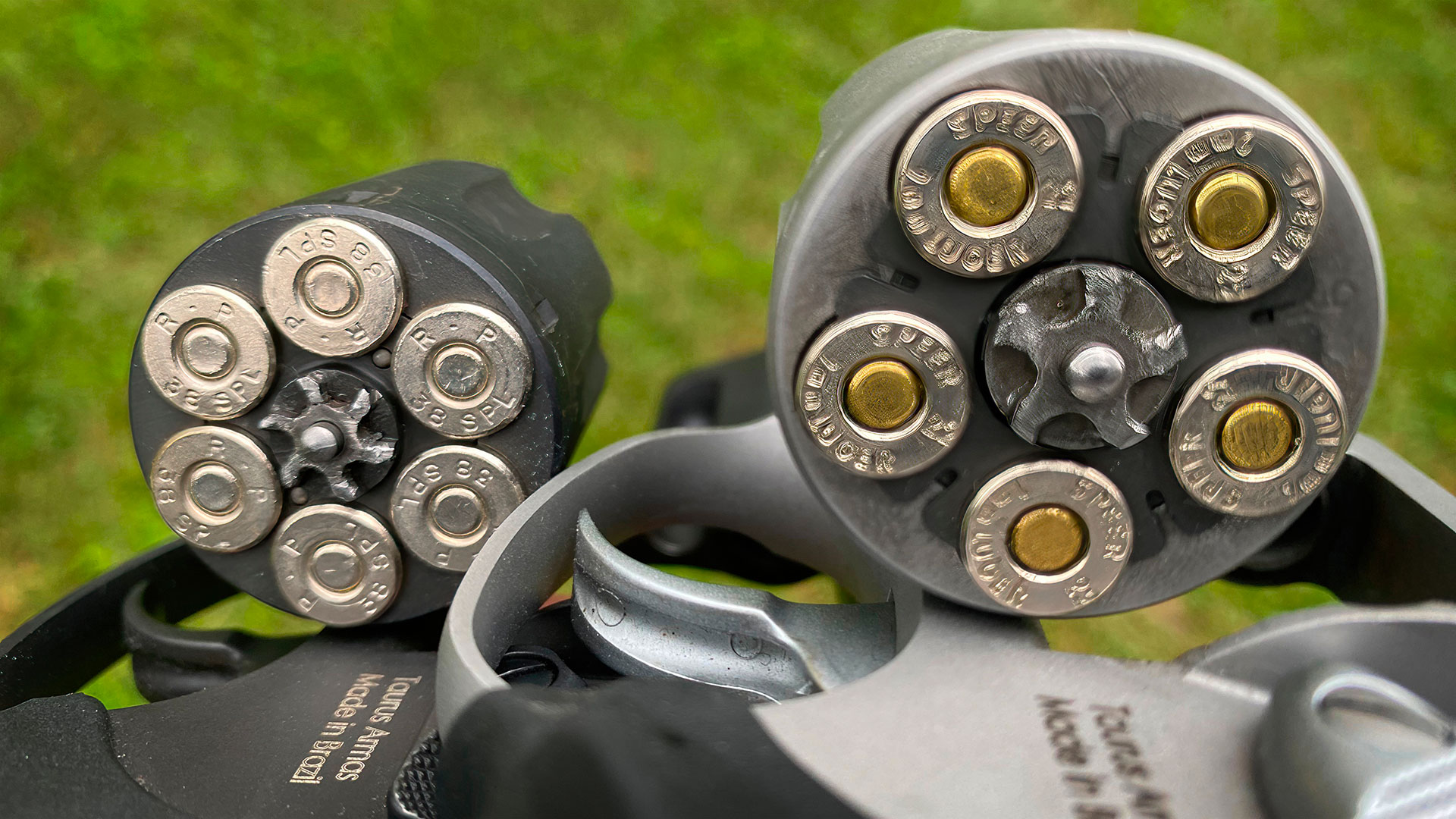M1911,
I never said “light strike.” I said failure to FULLY headspace, despite being in battery. It can and does happen, and the first strike typically yields a fully headspaced round for the NEXT strike, which can no longer absorb any of the firing pin/striker energy in yielding, even slightly, in the chamber. So you get a bang on the second strike, because the first one fully headspaced the round. This is not going to happen to you in typical firing range practice conditions. It does happen, and can easily be induced to a surprising extent in most guns, when you slowly move the slide forward just to battery. If has nothing to do with ammo quality. You are right, a bad or badly seated primer that IS an ammo defect is not likely to bang regardless of how many times it’s hit. But that’s quite rare in quality factory defense ammo, and is not what I’m talking about. Consider reading and thinking about what I wrote about (failure to fully headspace), not the different issue (light strike) that you chose to respond about.
Odds are about even that a real gunfight, civilian or LEO, will involve grappling distance or the ground or both. Here is a decent video about denying takeaway, persisting through a takeaway attempt, and controlling cycling to allow or inhibit continuity of fire, depending on your condition and the bad guy’s condition. These are more realistic in many respects than almost all firing range practice. And I imagine you can see how these conditions can yield intentional and expected, or unintentional and unexpected, failures to cycle, go fully into battery, or fully headspace.
Gulla developed the SIRT on the Glock model because his customers (agencies) use Glocks. It is not hard to see how the ability to second strike with one hand, leaving the other to protect, strike, grasp, or interfere, is valuable, rather than the two-handed cycling drill a Glock requires.
The fight becomes a gunfight the moment you begin your draw, regardless of what happened until then. If your practice isn’t at full speed, and leaving you bruised and bleeding at times, consider whether it’s realistic. Training for handgun combat on a firing range is like training for surgery by playing “Operation.” A lot of emergency gun handling does not involve firing.
Happy Feet: You’re talking about defective or variable ammo. I’m not. Try making your gun click instead of bang with good rounds. Simulate a grab attempt during firing, bad grip, mushy arm/wrist, slide drag from clothing or a takeaway attempt. Try to make your gun fail to bang reliably, and when it happens, don’t cycle the clicking round out. (Impossible with strikers). Pull again (DA) or cock and pull again (DA/SA). It will almost always bang when struck a second time. And try brace contact (“G Wrap”) firing and cycling control.
You can block slide action with your hand around the slide; index your non-firing hand off the front sight to keep meat off the muzzle. The force is as if you were trying to bend the slide downward, and both hands must apply force, your grip hand resisting the bend attempt of the non-shooting hand. You can prevent or minimize slide motion this way. You can also place your support hand, or even the thumb of the firing hand FIRMLY against the back of the slide, one-handed. The idea is to prevent it from starting to move and then striking you. It can be done reasonably comfortably a few times with muzzle energies up to about 375 pounds. I have not tried it with higher-powered cartridges.
I train with Gary and Don, among others. Tough motherf***ers, both.
View: https://youtu.be/kBzVNEbFxAY?feature=shared
Agree or not, like Frankenstein’s monster, we have breathed new life into this old topic, second strike capability. I think it merits more consideration than it gets.

![Popcorn [popcorn] [popcorn]](/xen/styles/default/xenforo/smilies.vb/043.gif)


![ROFL [rofl] [rofl]](/xen/styles/default/xenforo/smilies.vb/013.gif)